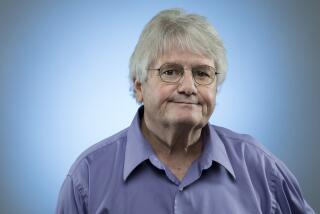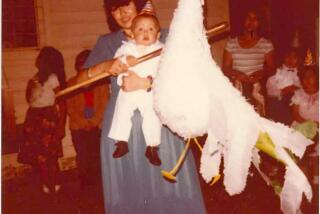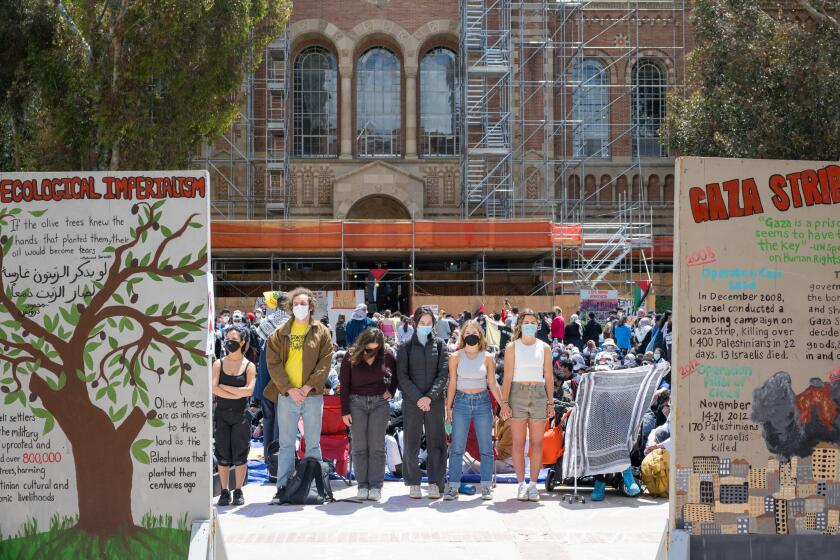Op-Ed: Need inspiration? Look to the obituaries

If you are combing the newspaper for profound truths, the obituaries are the place to start. Every one of them presents an inescapable fact of our lives: They end.
Simultaneously, though, obituaries also affirm life and the many varieties it takes. She loved drag racing. He was married nine times. In 1962, she served as Junior Miss Ohio.
For the record:
11:15 a.m. April 12, 2019An earlier version of this op-ed misidentified Dr. Paul Talalay as Norman Talalay.
I recently read the obituary of Dr. Paul Talalay, a molecular pharmacologist whose death at 94 was covered in the Baltimore Sun. Born in Berlin to Jewish parents, he was 9 in 1933 when his family used fake Haitian passports to flee the Nazis. At the height of his career at Johns Hopkins, Talalay did the research that brought broccoli into the limelight as a potential cancer preventative, doubling its sales and making national news of George H.W. Bush’s antipathy for the vegetable. And if that’s not interesting enough, there’s more: He was a regular bit player in the films of John Waters, playing a porn patron in “Polyester” and a cabdriver in “Hairspray.”
There it all was: history, science, culture, politics. The things that make us human viewed through the prism of one man’s life.
An obituary distills the essence of a life.
Heather Lende, obituary writer for the Chilkat Valley News in Haines, Alaska, wrote a book about the joys of reading and writing about the dead, “Find the Good: Unexpected Life Lessons From a Small-Town Obituary Writer.” Compared to the rest of the paper, she says, the obituaries are “downright inspirational.”
Lende’s skill is finding the details that reanimate the dead on the page. In her obituary of Evelyn Arbuckle, Lende described how the Ohio woman moved to Alaska in 1976 after surviving a small-plane crash that killed her husband and the pilot. She lived for two days on rainwater and blueberries, “singing hymns to ward off bears.” After her rescue, she credited God; her son credited her good winter coat. Years later, she won first prize at the Alaska State Fair for the wedding dress she sewed for his bride.
My own writing about the dead, in essays and books rather than obituaries, grew out of grief. I buried my father and a stillborn baby in my 20s. I was in my 30s when my husband died of AIDS.
I was a fledgling personal essayist back then, but already my subject was dead people. I found not just relief but joy in spending time in my head with the people I’d lost and in bringing them to life on the page. The effect of the work on others seemed similarly counterintuitive. Sad, yes, but morbid, no; somehow, life-affirming.
Enter the Fray: First takes on the news of the minute »
Writing about the dead doesn’t always illuminate the best aspects of humanity. Take James “Whitey” Bulger, a gangster who’d murdered many people and was ultimately killed in prison. His obit in the New York Times reported Bulger’s rules for living: “Never sell angel dust to children or heroin in the neighborhood, trust only the Irish, never lie to a friend or partner, and above all, never squeal to the authorities.” That concern for children had its limits, however. As this newspaper reported in Bulger’s obituary, the crime boss once tried to take over a South Boston liquor store. During the “negotiations,” he set his gun down, lifted the proprietor’s toddler daughter into his lap and commented what a shame it would be not to see her grow up.
An obituary distills the essence of a life. New York Times music critic Jon Pareles wrote this about Prince: “With deep bedroom eyes and a sly, knowing smile, he was one of pop’s ultimate flirts: a sex symbol devoted to romance and pleasure, not power or machismo.” In the Los Angeles Times, Geraldine Baum wrote this about Jackie Onassis: “She remained that Mona Lisa face that you could look at endlessly and see flashes of all her past faces — the sweet girl in riding jodhpurs, the First Lady in a tiara, the tear-smeared widow, the pampered wife. And finally the wide dark eyes, edged with fine wrinkles, watching a world that always was watching her.” In recent years, I’ve written two “books of the dead” -- short portraits of people who once were part of my life, including my mother and father, Philip Roth, David Bowie, a Realtor, a house cleaner, a dentist, young friends of my kids, and scores of others. I have had to use the words “suicide” and “overdose” more often than I would like; likewise “cancer” and “Alzheimer’s.” A gay friend who died in his 80s had a wonderful run, but he had just married for the first time when he went to the hospital for something minor and got a fatal infection.
This is how life goes, in the end. But you’ve spent enough time on the op-ed page. Turn to the obituaries.
Marion Winik is the author, most recently, of “The Baltimore Book of the Dead.” She will be appearing at the L.A. Times Festival of Books on Sunday at noon on a panel titled “Memoir: Exploring Life in Small Passages.”
More to Read
A cure for the common opinion
Get thought-provoking perspectives with our weekly newsletter.
You may occasionally receive promotional content from the Los Angeles Times.






